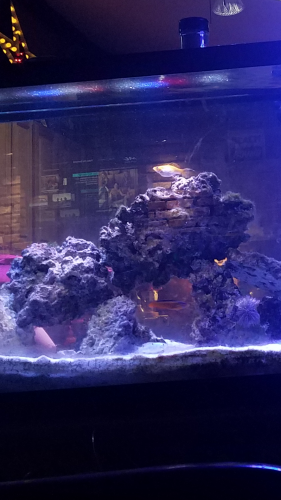It’s easy. Just mix some muriatic acid with some water in a bucket and let the rocks soak for 20 mins. The acid should be used up pretty fast. Then rinse with water. This will remove most of the organically from the rock.
I'm wondering about how much good has been done with an acid bath, if clean rock is rinsed with tap water. I know you didn't specify tap water, that's why I wanted to touch on it. I'm thinking that heavy metals and chemicals found in tap water will be soaked up by that clean rock as if it were a sponge. Knowing the cost to produce RO/DI, I would still recommend rinsing rock with it, rather than tap water.


